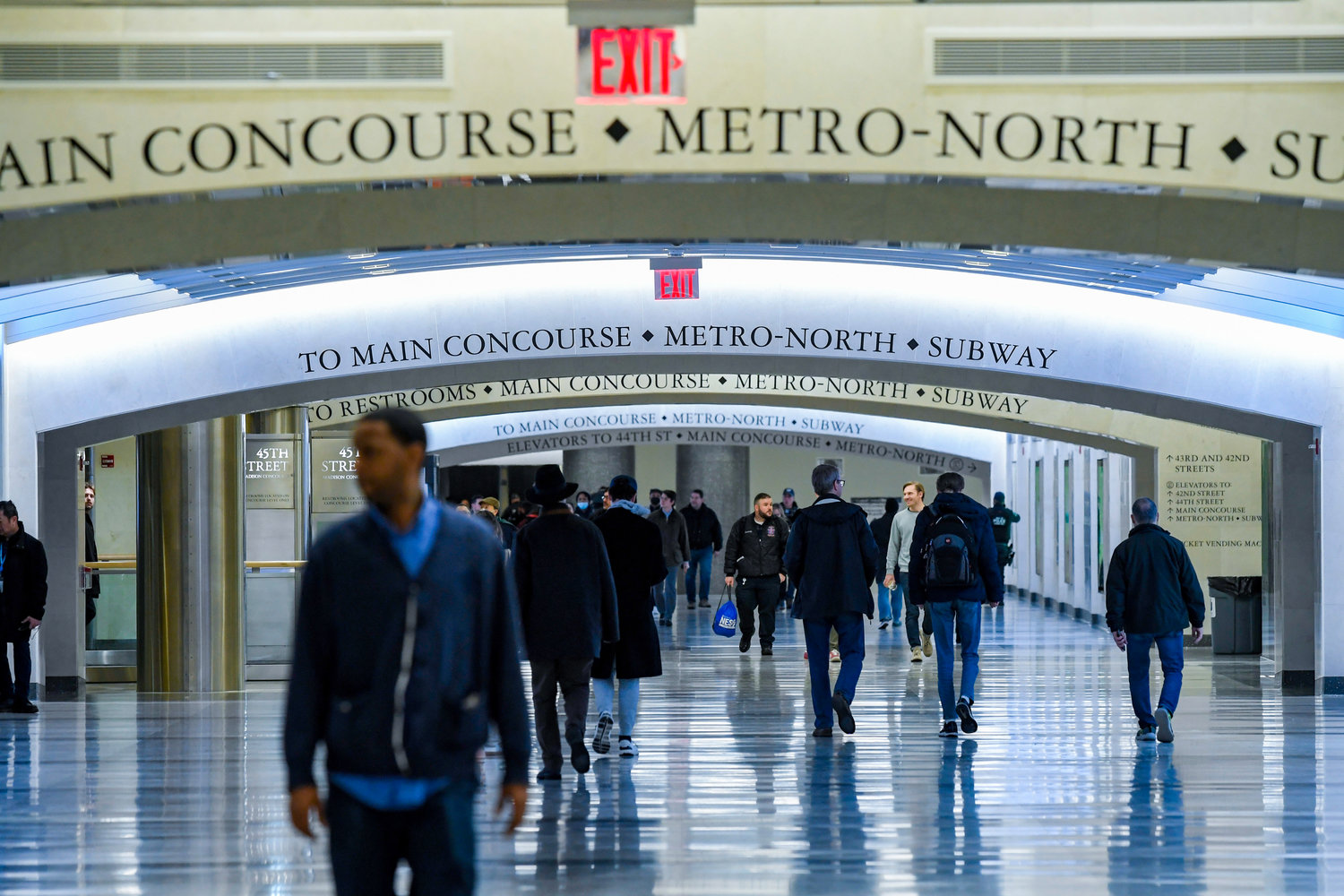Full Long Island Rail Road service to Manhattan's East Side finally coming
Commuters are riding the high of never-before-seen rail service aimed at connecting the Long Island Rail Road to the bedrock of Midtown Manhattan at Grand Central Madison.
The Metropolitan Transportation Authority celebrated a turning point with the long-anticipated opening of its 750,000-square-foot East Side Manhattan transit hub with the first shuttle train from Jamaica station on Jan. 25. Now the terminal is set for a full rollout of regular train service beginning Feb. 27.
The East Side Access Project, as it was known, has already drawn a daily rush of commuters — albeit under a limited format with shuttle service from the Queens station to Grand Central Madison.
Rather than plunging straightaway with full service, MTA officials said the station is in a soft-launch phase, enabling riders to slowly acclimate themselves to the additional shuttle service from Jamaica, find their way around the facility and test out commuting options.
Once Midtown’s terminal comes fully online, it will no doubt reorder the MTA’s transit system and send ripples through its 11 Long Island train branches, each offering direct or transfer service to Penn Station on the West Side, and Grand Central Madison.
For LIRR commuters, this change will be felt most acutely in adapting to an overhauled train schedule that divvies up Manhattan-bound train service between the two sister terminals.
Some commuters may feel more taken to the change than others with the promise of greater accessibility and efficiency to their commutes. Still, others can’t help but groan over the foreseeable loss, and longing for their preferred service lines and connections.
But at least for MTA chair and chief executive Janno Lieber, the change is a net-gain for most commuters — and a sign of economic renewal for the metro Long Island area, with a 41 percent increase in service.
Grand Central Madison provides “faster, more convenient travel that brings Long Island closer to the heart of the City,” Leiber said, in a release. “The new schedules are going to be a major shot in the arm for the local economy and the effort to get people back to offices, theaters and shopping.”
But critics are quick to point out that the often-touted 41 percent service increase — raising the number of daily trains from 665 to 936 — is relative to current service which has experienced a major cutback of its own compared to pre-pandemic levels.
Weekday ridership continues to hover at about 65 percent of what it was before any of us had ever heard of Covid-19.
And while MTA officials expect nearly 45 percent of riders to shift over to Grand Central Madison, there are nagging concerns about the potential travel headaches brought by the decline in available morning rush-hour train service to Penn.
Take, for example, the fact that the Long Beach branch which will get 10 additional rush hour trains from its current 13 at Penn Station. Yet, it will have two fewer rush hour trains at Penn Station with shared service lines to Grand Central Madison.
“The new schedules are designed to have more evenly spaced trains and fewer large gaps in service,” MTA spokesman Dave Steckel said. “There will also be more frequent service to Queens and on the Ronkonkoma and West Hempstead branches. New service promises decrease travel times from Long Island to Manhattan, and reduce crowding at Penn Station.
“We will continue to monitor and adjust service based on ridership trends and other factors.”
Have an opinion on Grand Central Madison service? Send an email to jlasso@liherald.com.

 49.0°,
Fog/Mist
49.0°,
Fog/Mist 




